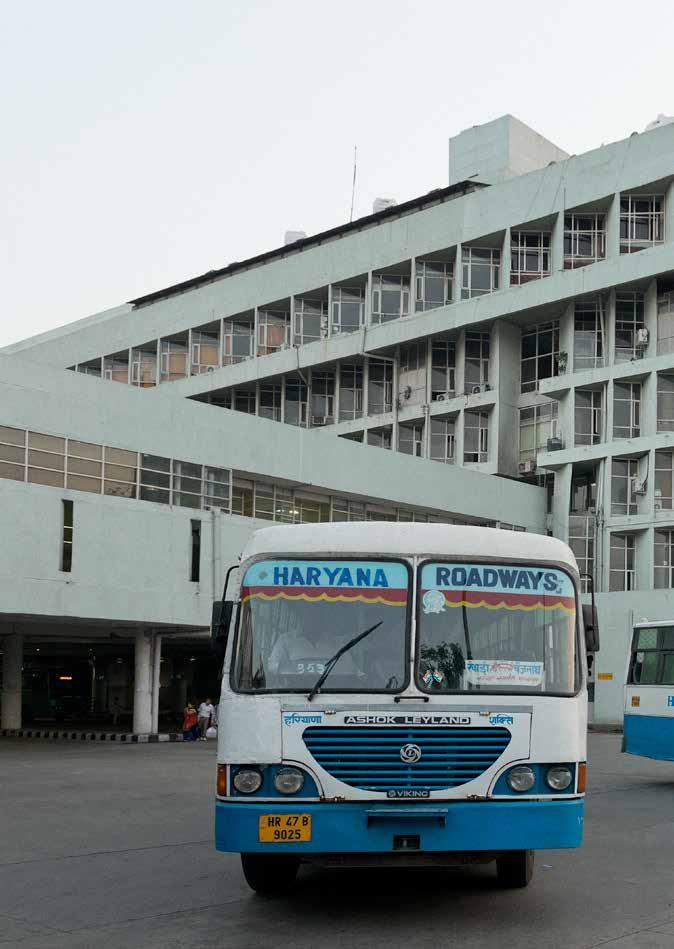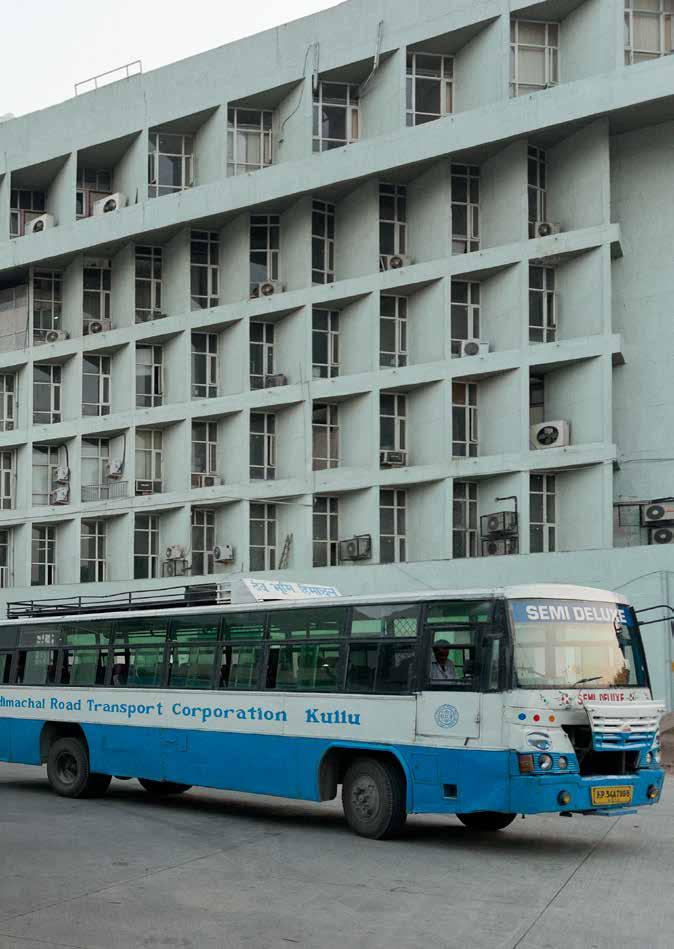
5 minute read
CITY MAKERS AND CITY BREAKERS
‘A Tribute to Joseph Allen Stein.’ The architect reflects on his personal meetings with Stein, his work, and his legacy.
This section of the book concludes with an overview of some facts and figures on the city compiled by arch-i as well as various maps. These graphic representations of the city provide a beautiful illustration of the staggering growth that Delhi has witnessed.
Advertisement
In the next section we present some of the interviews we held with practising professionals in Delhi. During our three visits we met a wide variety of architects and planners. Some were engaged in projects on a mammoth scale, such as Mohit Gujral of DLF and Onno Ruhl and Barjor Mehta of the World Bank. Some were practitioners with decades of experience: Romi Khosla and the world famous Raj Rewal. Others presided over flourishing practices covering a plethora of project types: Ambrish Arora, Pankaj Gupta, Christine Mueller, Madhav Raman, and Sonali Rastogi. Pradip Krishen and Mohammad Shaheer made us shift our gaze from the usual steel, cement, and stone to the trees and plants of Delhi. Joerie Aulman and Anne Feenstra not only shared their professional knowledge of planning and architecture in and around Delhi, but–being Dutch−also provided us with their intercultural take on working in Delhi.
In this section you will also find a brief article on the workshop we conducted at the School of Planning and Architecture (SPA) in Delhi. Students reflected on the expected, the unexpected, the conspicuous, and the inconspicuous spatial impact of the highly successful Metro.
We asked Bas Losekoot to travel with us to Delhi and to shine his light and focus his lens on India’s capital and its inhabitants. Who are the Delhiites? Who walks those wide pavements and visits the numerous green spaces? Who crowds the Metro and Delhi’s tiny lanes? His photo essay does more than justice to this fascinating metropolis: his images celebrate the many faces of Delhi.
We hope that in the current volume you will not only find the answers to the questions that we were asking ourselves, but that you will also feel some of the spark we felt while interacting with so many of Delhi’s interesting residents. We hope that you will be left feeling−just like we were−that you have learned from Delhi and want to keep Learning from Delhi.
Pelle Poiesz Gert Jan Scholte Sanne Vanderkaaij Gandhi




DUNU ROY
Dunu Roy, formerly A.K. Roy, is a chemical engineer by training, social scientist by compulsion, and political ecologist by choice. He worked for over four decades on land and water management, secure settlements, safe work, environmental planning, leadership training, and pollution control in both rural and urban communities. His work is poised on the delicate borderline between environment and development. He is the founder of the Hazards Centre, which provides research support to community and labour organisations in Delhi.
Who makes cities? And who breaks them? These questions are relevant as all cities go through a phase of ‘renewal’. The immediate response of most people would be that it is enlightened governments and rulers who make truly good cities, and that it is invaders, terrorists, and impoverished migrants who break them. But an instinctive reaction is not necessarily an indicator of reality, it could be a result of a mixture of propaganda and history; perhaps the ‘truth’ could even lie elsewhere. For cities have their own organic logic of growth. Different interests compete to make the city the way they want it. Those who fail to discover this central truth eventually end up seeing only their own needs as central to the city, at the cost of those whose lives are hidden beneath the grime and dirt on which the city is built. Nothing illustrates this better than the modern history of the city of Delhi
The visible structure of the city is imposed upon its social foundations. When even a casual visitor looks up at the imposing walls of the forts built by the Tughlaqs and the Mughals, it could occur to him that these walls could not have been actually ‘built’ by the kings. There must have been masons and stonecutters, water carriers and sand loaders, mixers and helpers, woodcutters and carpenters, ironsmiths and potters, labouring men and women and donkeys by the thousands who did the actual work. So where, in the pages of history, did they all disappear?
COMPANY POWER
The armed force on which the English built their power necessitated the planning and construction of barracks and Company quarters near every large town. The confluence of the ancient Grand Trunk Road and the newly commissioned Bombay-Agra Road in the first half of the nineteenth century made Delhi a place of crucial military importance. The aftermath of the Mutiny of 1857 led to further enforcement of control and the area around the Red Fort was cleared of the civilian population to enable the military to assert its supremacy. But what was this civilian population near the fort and why did it pose a threat to the new rulers? And why was the civil administration moved in 1912 to a Secretariat that was built far away from the fort, next to the Northern Ridge (near Metcalfe House, built in 1835 to house the Governor General’s agent at the Mughal Court), within the safer confines of the Civil Lines? Did it have anything to do with distancing the bonded labouring classes from the reigning centre?
Immediately after the Mutiny it was also suggested by the British military commanders led by James Outram that the entire Walled City of Shahjahanabad be razed to the ground, but fortunately there was not enough explosive available for this task. While the Civil Lines for British administrators who took over power in 1803 had been laid out to the north of the Walled City, the Viceregal Lodge (now Delhi University) with its protective barracks was built in 1920 at an even safer distance from the subjugated ‘natives’, across and to the north-west of the Ridge. The imperatives of colonial rule were also reflected in the formation of the Delhi Municipal Committee in 1874. In the next decade the Committee proposed the construction of a commercial square outside the Walled City to the north, clearing the space for a new commercial quarter between Lahori Gate and Sadar Bazar, to be developed as a profitable enterprise in the tradition of the East India Company. The close of the century also saw the intrusion of the railway line as it broke through the ramparts of the Red Fort and Shahjahanabad. This


